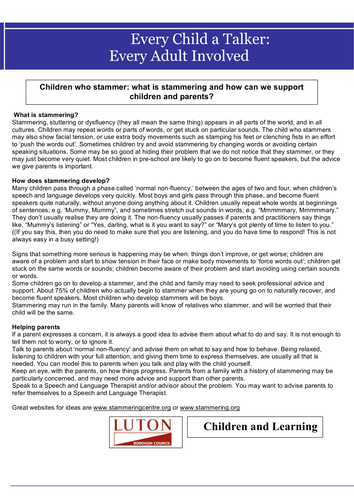
Stammering, stuttering or dysfluency appears in all parts of the world, and in all cultures. Children may repeat words or parts of words, or get stuck on particular sounds. The child who stammers may also show facial tension, or use extra body movements in an effort to ‘push the words out’. Sometimes children try and avoid stammering by changing words or avoiding certain speaking situations. Some may be so good at hiding their problem that we do not notice that they stammer, or they may just become very quiet. Use this guide to learn more about stammering and how it effects children.
Something went wrong, please try again later.
This resource hasn't been reviewed yet
To ensure quality for our reviews, only customers who have downloaded this resource can review it
Report this resourceto let us know if it violates our terms and conditions.
Our customer service team will review your report and will be in touch.
£0.00
